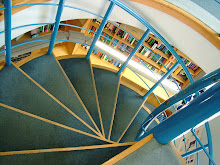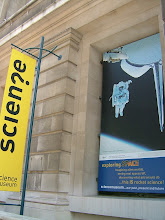PHYSICS:How to Create a Spin CurrentPrashant Sharma*
We usually think of a current as a flow of particles, such as the flow of electrons in a charge current generated by a battery. However, besides its charge, the electron also carries a spin, whose projection along the spin axis can point up or down. Conventional electronic devices ignore this property of the electron, but new devices are now being built that rely on the spin (1, 2). Such devices should have faster switching times and lower power consumption than conventional devices, mainly because spins can be manipulated faster and at lower energy cost than charges can.
All currently available spin-based devices are memory devices that use the spin to store information. Spin-based electronic (spintronic) devices such as transistors (2) require spin currents, just as conventional electronic devices require charge currents. Unfortunately, it is very difficult to generate and transport a spin current.
To understand what is meant by a spin current, consider an electron current that flows through a channel and contains only up-spin polarized electrons. Add to this a similar current in which all electrons are down-spin polarized and flow in the opposite direction. The result is a current of spins only; there is no net particle transfer across any cross section of the channel.
A spin current differs from a charge current in two important ways. First, it is invariant under time reversal: If the clock ran backward, spin current would flow in the same direction. Second, spin current is associated with a flow of angular momentum, which is a vector quantity. This feature allows quantum information to be sent across semiconducting structures, just as quantum optics involves distribution of information across optical networks via polarization states of the photon.
Most methods currently under investigation use ferromagnets to inject a spin current into a nonmagnetic material. However, this process is inefficient. For practical applications, the generation and detection of spin currents should not require strong magnetic fields and interfaces between semiconductors and ferromagnets.
Creating a spin current through spin pumping I. A single channel of electrons is formed in a 2D electron system through electrostatic confinement. When out-of-phase ac voltages are applied to the two gates, the channel is perturbed, resulting in a dc electron current. If one of the gates is replaced by an oscillating magnetic field, a spin current is pumped. One method that meets these requirements is spin pumping, which involves the scattering of electrons off a small region (a quantum cavity). In the cavity, electrons with different spins take dissimilar paths and therefore scatter differently off the cavity walls. Through modulating the shape of the cavity periodically in time, a constant spin current can be generated.
The theory of pumping electrons without changing their spin state is based on the idea (3) that one can create a traveling wave potential for electrons to ride on. At any moment, the electrons sit in the minima of the wave and move along with it. The efficiency of this mechanism depends on the depth of the traveling wave: The deeper the potential, the greater the chance that the electrons remain trapped and are transported along with the wave.
One practical way to create such a traveling wave is to periodically modulate the transmission of the electron flow at two points in space (4). This can be done by applying two metal gates on a channel (see the first figure) or on a quantum cavity (second figure, top panel). Experimentally, these structures are created in a two-dimensional (2D) layer of electrons (an electron gas), which forms in semiconducting heterostructures typically made from GaAs and AlGaAs. Switkes et al. have shown experimentally that a quantum cavity can indeed be modulated in time (5).
These ideas have recently been generalized to create spin currents. The earliest proposal (6) was to create a traveling wave for up spin-polarized electrons that is opposite in direction to that for down spin-polarized electrons. Creation of such spin-selective traveling waves requires the use of some externally controllable mechanism to break spin-rotation symmetry--that is, to define a unique spin axis in space. This can be achieved by replacing one of the metal gates in the first figure with an external, time-dependent magnetic field. To obtain efficient spin transport, one must increase the depth of the minima in the traveling waves by restricting the electrons to a long narrow channel--a quantum wire (7)--such that they repel each other.
Creating a spin current through spin pumping II. (Top) A quantum cavity is perturbed through out-of-phase ac voltages applied to the two gates. Electrons entering the cavity scatter off the cavity walls several times before leaving. (Bottom) In a sufficiently large cavity, pumping leads to a spin current with a tunable direction of spin polarization. Both in-plane (green arrow) and out-of-plane (red arrow) polarizations are possible. However, the picture of a single traveling wave is inadequate for describing pumping in a finite cavity, because the electron follows a complicated path before exiting the cavity. The direction of the current is therefore determined by the details of the scattering in the cavity (8). This sensitivity to the electron's path in the cavity is an essential feature of mesoscopic semiconductor devices, which can be up to several tens of micrometers in size.
In a theoretical proposal (9) for spin pumping, this dependence of the current through the cavity on externally controllable parameters is used to generate a spin current. The proposal is to modulate the shape of a quantum cavity through the use of two magnetic fields. A strong magnetic field applied in the plane of the cavity (see the second figure, top panel) couples only to the spin of the electrons. For such a strong in-plane magnetic field, there are more up-spin electrons (whose spins are aligned with the magnetic field) than down-spin ones inside the cavity. As a result, the pumped current is spin-polarized along the direction of the strong magnetic field and in the cavity plane; that is, it is a mixed charge and spin current.
To achieve only a spin current, a second, weak magnetic field is added. The field is weak enough not to affect the spin of an electron, but the Lorentz force exerted by this field affects the spatial motion of the charged electrons. One would therefore expect (on average) the up-spin charge current to flow in one direction while the down-spin charge current flows in the opposite direction. Spin currents have recently been produced experimentally with such a device (10).
An alternative to using magnetic fields in the cavity has also been proposed (11). It is based on the fact that the spin state of an electron moving inside a semiconductor is not independent of its momentum state. Because the quantum cavity is formed in a semiconductor--typically a GaAs/AlGaAs heterostructure--the spin of the electron is coupled to its motion inside the cavity. Because of this spin-orbit coupling, the direction of the spin of an electron follows the electron's motion. As a result, the direction of the spin polarization coming out of the cavity depends on the details of the scattering in the cavity (12). By increasing the number of times an electron scatters off the cavity walls, the in-plane spin projection of the electron can be made small, and its spin can be made to point in a direction perpendicular to the plane of the electron gas (see the second figure).
This approach should allow spin currents to be pumped through a quantum cavity without an in-plane magnetic field. Because of spin-orbit coupling, the outgoing current will be spin-polarized. By either applying a weak perpendicular magnetic field [as in the experiments in (10)] or by inducing small changes in the density of electrons in the cavity, a pure spin current can be obtained. In this method of pumping, the direction of polarization of the spin current can be changed from in-plane to out-of-plane by altering the shape and size of the quantum cavity (second figure, bottom panel). The approach has not yet been realized experimentally.
Spin pumping in mesoscopic systems allows the spin-polarization direction of currents to be manipulated without the use of strong magnetic fields and ferromagnets. However, some experimental challenges remain before this method is ready for use in actual spintronic devices. One difficulty lies in efficiently detecting spin currents whose polarization direction is arbitrary.
Spin currents polarized in the plane of the 2D electron system have been detected electrically (10). Out-of-plane polarization in a 2D electron system may be detected (11) via the spin Hall effect. Because of this effect, an electron with its spin polarized perpendicular to its momentum is deflected in a direction orthogonal to both its momentum and its spin. Reversing the direction of either the momentum or the spin polarization reverses the direction of deflection. As a result, a spin current with an out-of-plane polarization generates a transverse electric field in a material that shows the spin Hall effect. Recently, the spin Hall effect has been observed for the first time in a semiconducting GaAs/InGaAs heterostructure (13).
We have yet to create a spin pump that can generate spin currents with any chosen direction of spin polarization. Nonetheless, recent experimental and theoretical advances give hope that devices relying on spin currents will soon be realized.
References
S. A. Wolf et al., Science 294, [1488] (2001).
I. Zutic, J. Fabian, S. Das Sarma, Rev. Mod. Phys. 76, 323 (2004) [APS].
D. J. Thouless, Phys. Rev. B 27, 6083 (1983) [APS].
B. L. Altshuler, L. I. Glazman, Science 283, [1864] (1999).
M. Switkes et al., Science 283, [1905] (1999).
P. Sharma, C. Chamon, Phys. Rev. Lett. 87, 096401 (2001) [APS].
T. Giamarchi, Quantum Physics in One Dimension (Clarendon, Oxford, 2004) [publisher's information].
P. W. Brouwer, Phys. Rev. B 58, 10135 (1998) [APS].
E. R. Mucciolo, C. Chamon, C. Marcus, Phys. Rev. Lett. 89, 146802 (2002) [APS].
S. K. Watson, R. M. Potok, C. M. Marcus, V. Umansky, Phys. Rev. Lett. 91, 258301 (2003) [APS].
P. Sharma, P. W. Brouwer, Phys. Rev. Lett. 91, 166801 (2003) [APS].
I. L. Aleiner, V. I. Fa'lko, Phys. Rev. Lett. 87, 256801 (2001) [APS].
Y. K. Kato, R. C. Myers, A. C. Gossard, D. D. Awschalom, Science 306, [1910] (2004).
10.1126/science.1099388
From: http://www.sciencemag.org/cgi/content/full/307/5709/531
skip to main |
skip to sidebar
站在巨人的肩膀上 追尋著愛奧尼亞式迷情的源頭 找尋著存在的意義 心靈最深層的印記 烙印著傳承的使命 隨著宇宙萬物幻化 開啟不朽之殿堂









沒有留言:
張貼留言